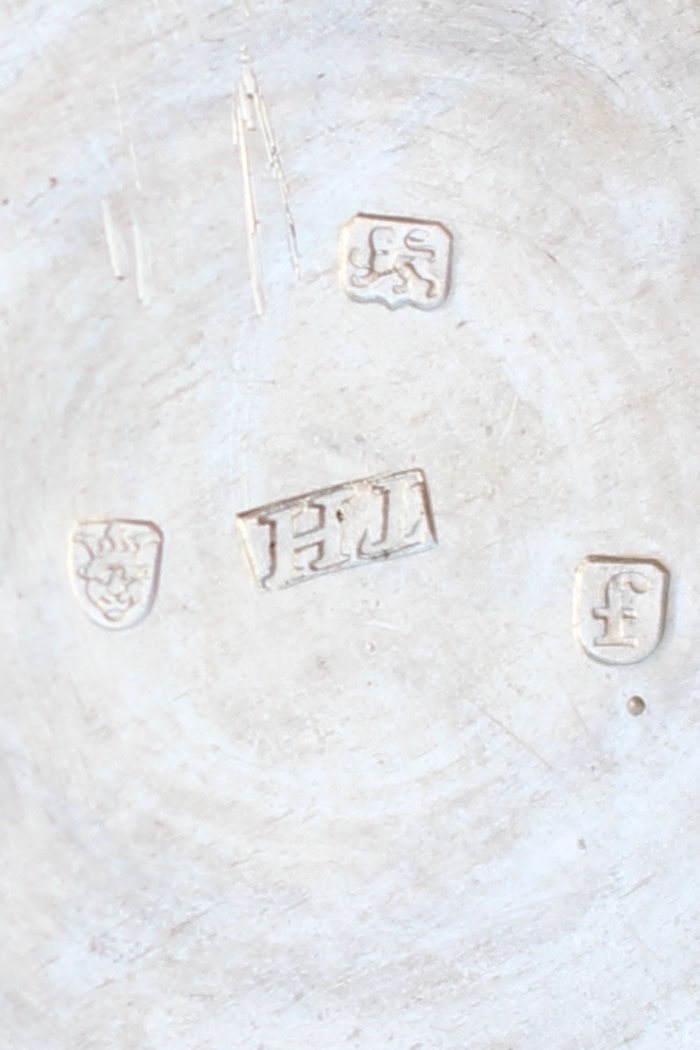
Code BA15061702: Georgian Long-Neck Hallmarked Silver Compass by Dollond, London, 1781
| This is a rare Georgian Long-Neck open-face Silver compass dating from 1781 and made by Dollond of London.
"Peter Dollond (24 February 1731- 2 July 1820, born Kensington, England) was an English maker of optical instruments, the son of John Dollond. He is known for his successful optics business, and for the invention of the apochromat. Working together with his father and subsequently with his younger brother and nephew (George Dollond) he successfully designed and manufactured a number of optical instruments. He is particularly credited with the invention of the triple achromatic lens - i.e., apochromatic lens - in 1763, still in wide use today, though known as the Cooke triplet after a much later 1893 patent. Peter Dollond worked at first silk weaving with his father, but his father's passion for optics inspired him so much that in 1750 Peter quit the silk business and opened an optical instruments shop in Kennington, London. After two years, his father gave up silk, too, and joined him. Dollond telescopes, for sidereal or terrestrial use, were amongst the most popular in both Great Britain and abroad for a period of over one and half centuries. Admiral Lord Nelson himself owned one. Another had sailed with Captain Cook in 1769 to observe the Transit of Venus. The Peter Dollond compound chest microscope is based on improvements to the Cuff-style microscope introduced by British scientific instrument designers Edward Nairne and Thomas Blunt around 1780. Another design was for the Peter Dollond compound monocular Eriometer around 1790 used to accurately measure the thickness and size of wool fibres. After successfully defending a legal challenge to the patent he held for the achromatic lens the business prospered and he successfully sued his rivals for patent infringement. Dollond's reputation, especially with his father being a Fellow of the Royal Society as a result of his development and patenting of the achromat, provided the company with the de facto right of refusal on the best optical flint glass. This privilege permitted Dollond to maintain an edge in quality over competitor's telescopes and optical instruments for many years.". (source: https://en.wikipedia.org/wiki/Peter_Dollond ). The case is sterling silver with London 1781 silver hallmarks inside the back. There is also the maker's initials T. H.. On the back it is engraved Dollond London. The silver case is still in excellent condition without any dings or dents. The bow has a very nice design typically used in the late 1700s and early 1800s. The same design was used on pocket watches of this era as well. This example has a silver lid to cover the dial and protect the crystal. The compass has a porcelain dial. It is numbered every 10 degrees and graduated in degrees. Between North and East, the numbers go from 0 to 90, than from 90 to 0 between East and South. The same pattern is repeated between South and West, and between West and North. This kind of compass is highly precise and several examples were used by the military for this reason. The porcelain dial is free of chips or hairlines. The transit lock can be activated by sliding a small lever under the long neck. The dial is covered with its original glass crystal free of chips and scratches. The compass is precise and find North easily. This is a very rare compass measuring 50mm in diameter and 68mm from bottom to bow. |
SOLD
